What is Geotextile?
Geotextile is a permeable fabric that is used in
association with soil that can separate, filter, reinforce, protect, or drain.
Typically it is made from a synthetic polymer such as polypropylene or
polyester. It’s come in three basic forms: woven (resembling mail bag sacking),
needle punched (resembling felt), or heat bonded (resembling ironed felt). It
has been introduced and products such as geogrids and meshes have been
developed. Geotextiles can withstand many things, are durable, and can soften a
fall if someone falls. Generally, these materials are referred to as
geosynthetics and each configuration—geonets, geosynthetic clay liners,
geogrids, geotextile tubes, and others—can yield benefits in geotechnical and
environmental engineering design.
History of geotextile
Geotextile was originally intended to be an alternative to granular soil filters.
Sometimes used the term geotextiles is as filter fabrics. It originally began
in the 1950s, with the R.J. Barrett precast concrete using geotextiles behind
the ocean, under precast concrete erosion control blocks, under large rock
fragmentation, and in other erosion control situations. He used different
styles of knitted monofilament fabrics, all characterized by a relatively high
percentage of open areas. He discussed both adequate fabric strength and proper
expansion as well as adequate permeability and soil retention and set the tone
for the use of geotextiles in filtration situations. Beginning in the 1980s,
geotextiles were utilized to minimize reflective cracking in asphalt overlays
as well as to improve the performance of base aggregate layers. The terminology
used in the technical literature to describe the various applications of
geotextiles in roadway systems and the functions of geotextiles incorporated
into roadway design has not been consistent.
Objectives/Functions of Geotextile
There
are many functions of geotextile. Such as below-
1. Geotextile for Separation
The
geotextile, placed between two dissimilar materials, maintains the integrity
and functionality of the two materials. It may also involve providing long-term
stress relief. Key design properties to perform this function include those
used to characterize the survivability of the geotextile during installation.
The separation of different materials using geotextiles is one of the primary
functions that can be served. Its specific use in that regard is the focus of
this chapter. After reviewing the essential design considerations like burst
strength, tensile strength, puncture resistance, and impact or tear resistance,
specific applications in roadways and railroads and other applications like
walls, dams, surcharges, and barriers will be addressed. Finally, geotextiles
are used as a composite with other geosynthetics, and soil will be mentioned.
2. Geotextile for Filtration
The
filtration characteristics are used to allow water to move in both
directions. These types of geotextiles may be woven or non-woven and fine
aggregates are used to prevent movement between soil layers. Depending on the
sharpness and permeability of the material, geotextiles can stimulate the
lateral flow of sewage, disrupting the kinetic uptake of groundwater. It can be
used in both vertical and horizontal applications, helping to solve drainage
problems around homes and along roads and curbs. Geotextile filters are used to
avoid hydrodynamically stimulated transport of soil particles. To design a
filter, four criteria must be fulfilled:
a.
Finer material has to be retained.
b.
Permeability must not decrease significantly to avoid the buildup of increased
water pressure.
c.
The filter must resist clogging and
d.
It must have survivability or robustness.
For
the design, tests are necessary to judge the applicability of fabric for the
desired purpose. As important as the design is the installation process has to
be performed in such a way to guarantee the proper functioning of the filter
over the desired service time. Therefore, all possible effects must be
considered during installation.
3. Geotextile for Drainage
Geotextiles
are used intensively and successfully as drainage materials such as liquid
collection layers in landfills as drains to accelerate the rate of
consolidation of saturated soils, as capillary barriers, and so forth. The
permeability of a geotextile or geocomposite drain is mainly influenced by the
confining pressure and the material confining it. For all products, the
drainage capacity reduces with an increase in the confining pressure; the value
confined in the soil is less than that confined in rigid plates or a rubber
sleeve. It is suggested that a standard used for design should be determined by
an experiment that closely mimics the limitations of the field. If only the
manufactured value is available, reduction factors considering soil clogging,
etc., should be applied. Some up-to-date theories have been presented for the
design of geotextile and/or geocomposite drains, along with the landfill
leachate collection method and the presentation of horizontal drains. In the
future, stronger and stiffer reinforcement–drainage geocomposites, clog-free
geotextile drains for poorly graded and/or finely gradated soils, and
biodegradable prefabricated vertical drains are expected to be developed or
invented.
4. Geotextile for Reinforcement
Geotextile
reinforcement can be used to improve the construction and long-term efficiency
of roadways and railways. These improvements are accomplished through
structural interaction with the granular layers of the roadway or railway
section, increasing the integrity and structural capacity of these support layers over the lifetime of the roadway or railway system.
The types of geotextiles used in these applications and their key features will be reviewed to provide optimal functionality. Guidelines for their selection and use in these applications will be presented and references will be provided for further information and advice. This will include synergistic consideration for other functions such as separation, filtration, and drainage (i.e., as covered in chapters Geotextiles used in separation Geotextiles used infiltration, and Geotextiles used in drainage) for optimal improvement in roadway performance. The insight will also be provided about future trends and advancements such as smart geosynthetics, which provide long-term monitoring capabilities.
5. Geotextile for Sealing
Soil
sealing can be defined as the destruction or covering of soils by buildings,
constructions, and layers of completely or partly impermeable artificial
material (asphalt, concrete, etc.).This is the most intense form of land
acquisition and it is basically an irreversible process. In other words, it is
the mechanism by which manures suggest that geotextiles of fine porosity can
be used as impermeable liners for earthen manure storage facilities of sands
and gravels.
Uses of Geotextile
1.
Geotextiles are used in civil engineering including roads, airfields,
railroads, embankments, retaining structures, reservoirs, canals, dams, bank
protection, coastal engineering, and construction site silt fences or tubes.
Generally, geotextiles are placed at the tension surface to strengthen the
soil.
2.
It is also used for sand dune armoring to protect upland coastal property from
storm surges, wave action, and flooding. A large sand-filling container (SFC) in
the tuning system prevents storm erosion beyond the SFC. Using the opal unit
instead of a single tube eliminates harmful deficiencies.
3.
Geotextiles are used as matting to stabilize flow in stream channels and
swales.
4.
Geotextiles can improve soil strength at a lower cost than conventional soil
nails. Also, geotextiles allow planting on steep slopes and further protect the
slopes.
5.
Geotextiles have been used to protect the fossil hominid footprints of Laetoli
in Tanzania from erosion, rain, and tree roots.
6.
In building demolition, geotextile fabrics in combination with steel wire, and fencing can contain explosive debris.
7. Coir (coconut fiber) geotextiles are popular for erosion control, slope stabilization, and bioengineering, due to the fabric's substantial mechanical strength. Coir geotextiles last about 3 to 5 years, depending on the fabric weight. The product degrades into humus, enriching the soil.

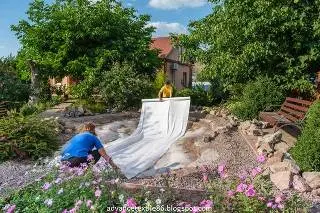
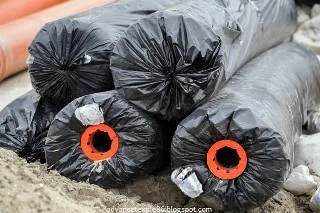
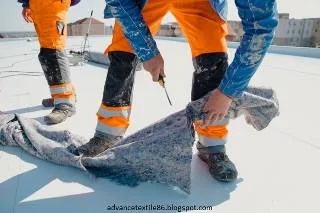
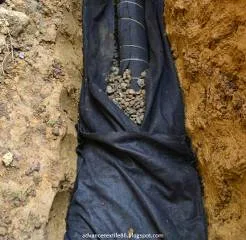
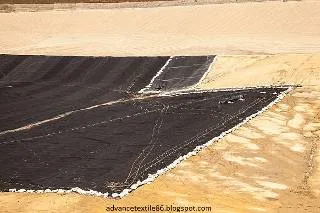







0 Comments